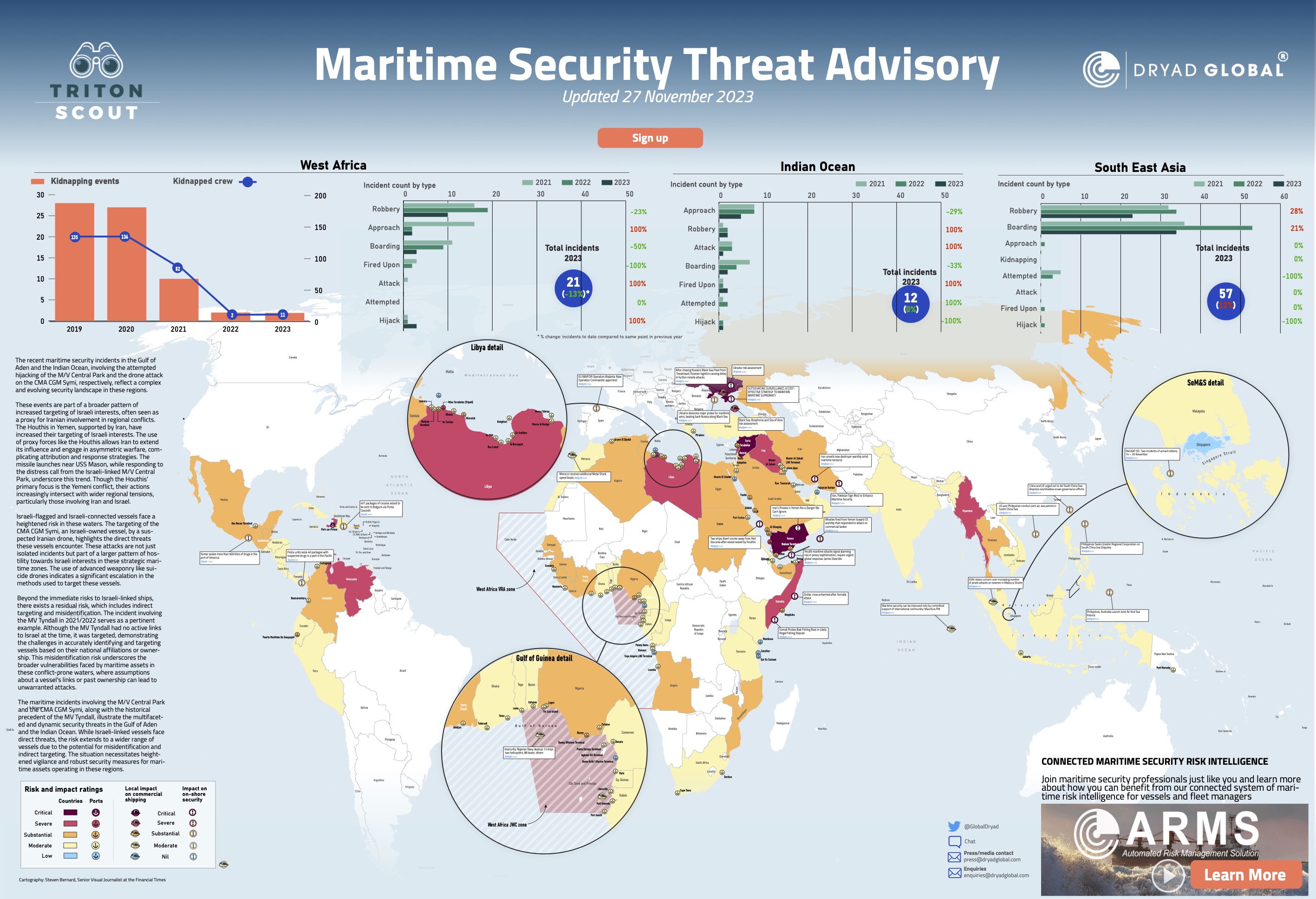Access the latest Maritime Security Threat Advisory for the week commencing 27th November 2023.
👉 The recent maritime security incidents in the Gulf of Aden and the Indian Ocean, involving the attempted hijacking of the M/V Central Park and the drone attack on the CMA CGM Symi, respectively, reflect a complex and evolving security landscape in these regions.
These events are part of a broader pattern of increased targeting of Israeli interests, often seen as a proxy for Iranian involvement in regional conflicts. The Houthis in Yemen, supported by Iran, have increased their targeting of Israeli interests. The use of proxy forces like the Houthis allows Iran to extend its influence and engage in asymmetric warfare, complicating attribution and response strategies. The missile launches near USS Mason, while responding to the distress call from the Israeli-linked M/V Central Park, underscore this trend. Though the Houthis' primary focus is the Yemeni conflict, their actions increasingly intersect with wider regional tensions, particularly those involving Iran and Israel.
Israeli-flagged and Israeli-connected vessels face a heightened risk in these waters. The targeting of the CMA CGM Symi, an Israeli-owned vessel, by a suspected Iranian drone, highlights the direct threats these vessels encounter. These attacks are not just isolated incidents but part of a larger pattern of hostility towards Israeli interests in these strategic maritime zones. The use of advanced weaponry like suicide drones indicates a significant escalation in the methods used to target these vessels.
Beyond the immediate risks to Israeli-linked ships, there exists a residual risk, which includes indirect targeting and misidentification. The incident involving the MV Tyndall in 2021/2022 serves as a pertinent example. Although the MV Tyndall had no active links to Israel at the time, it was targeted, demonstrating the challenges in accurately identifying and targeting vessels based on their national affiliations or ownership. This misidentification risk underscores the broader vulnerabilities faced by maritime assets in these conflict-prone waters, where assumptions about a vessel's links or past ownership can lead to unwarranted attacks.
The maritime incidents involving the M/V Central Park and the CMA CGM Symi, along with the historical
Fr. Polynesia precedent of the MV Tyndall, illustrate the multifaceted and dynamic security threats in the Gulf of Aden and the Indian Ocean. While Israeli-linked vessels face direct threats, the risk extends to a wider range of vessels due to the potential for misidentification and indirect targeting. The situation necessitates heightened vigilance and robust security measures for maritime assets operating in these regions.






